Start Strong at Home: Fitness Tips for Newbies
Chosen theme: Home Fitness Tips for Newbies. Welcome! This is your friendly launchpad for moving more, feeling stronger, and building a consistent at-home routine without overwhelm—just practical steps, real stories, and encouragement you can act on today.
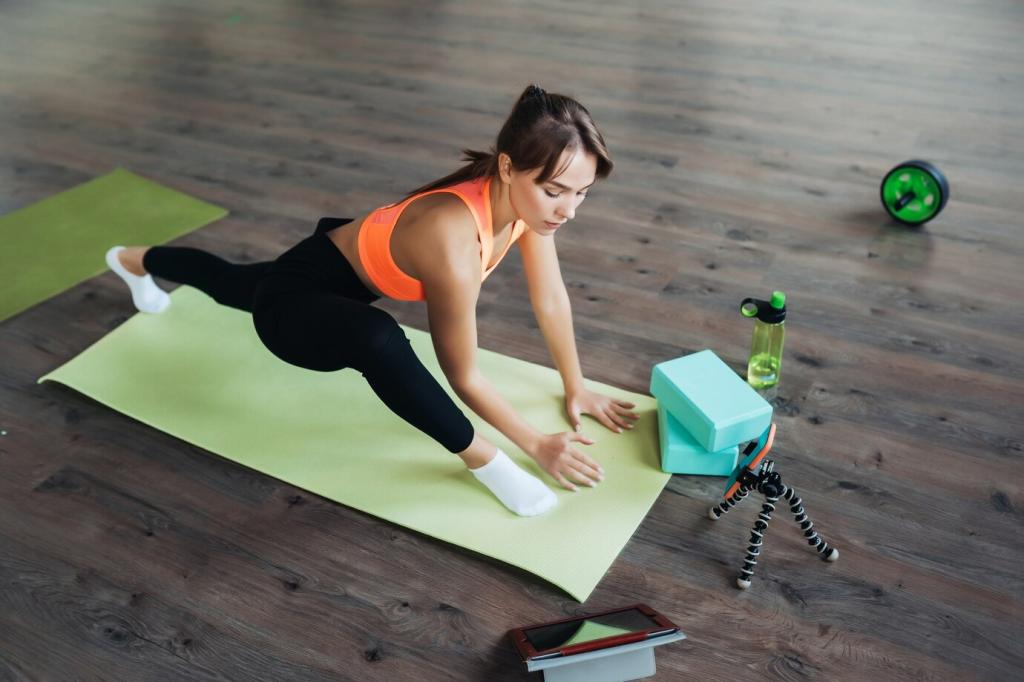
Set Up Your Starter Space
Claim two square meters of floor, remove tripping hazards, and roll out a non-slip mat. Keep a stable chair nearby. Wear supportive shoes if your floor is hard. A tidy sightline reduces excuses and quietly nudges action every single day.
Set Up Your Starter Space
Start with a mat, a long resistance band, and a set of mini loop bands. Add a water bottle and towel. Use a backpack filled with books as a weight. Optional dumbbells can come later, once your habit feels sticky.
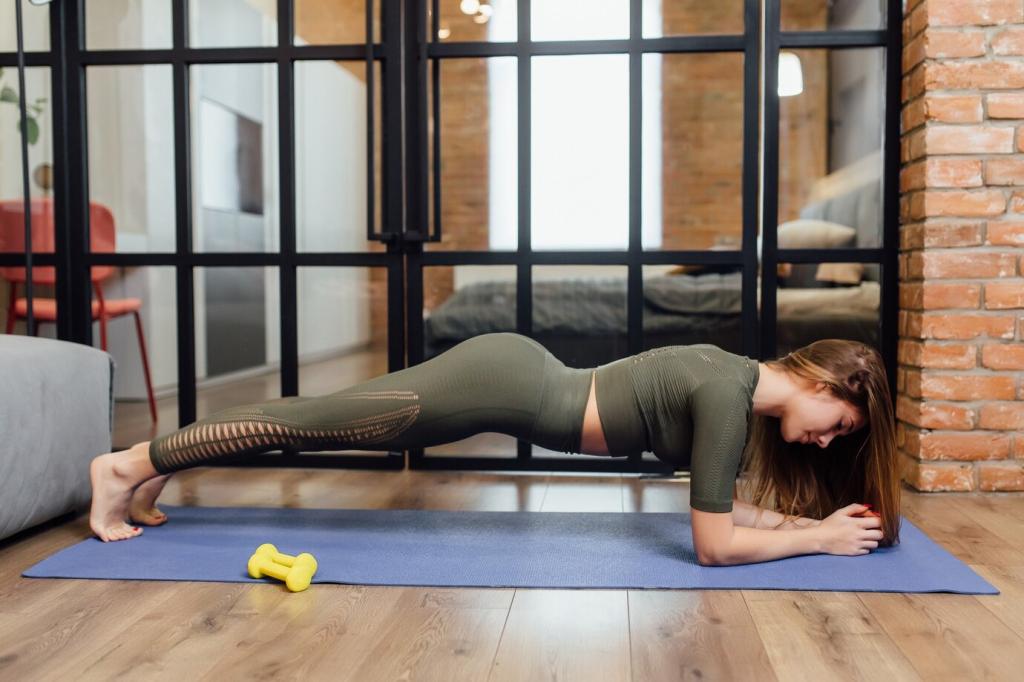
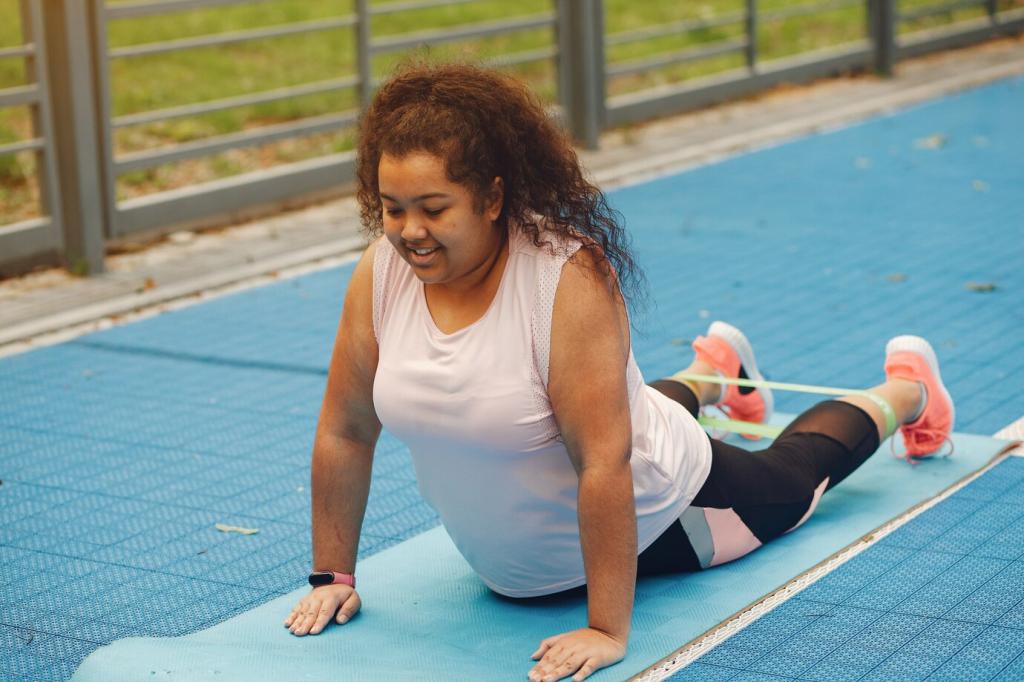
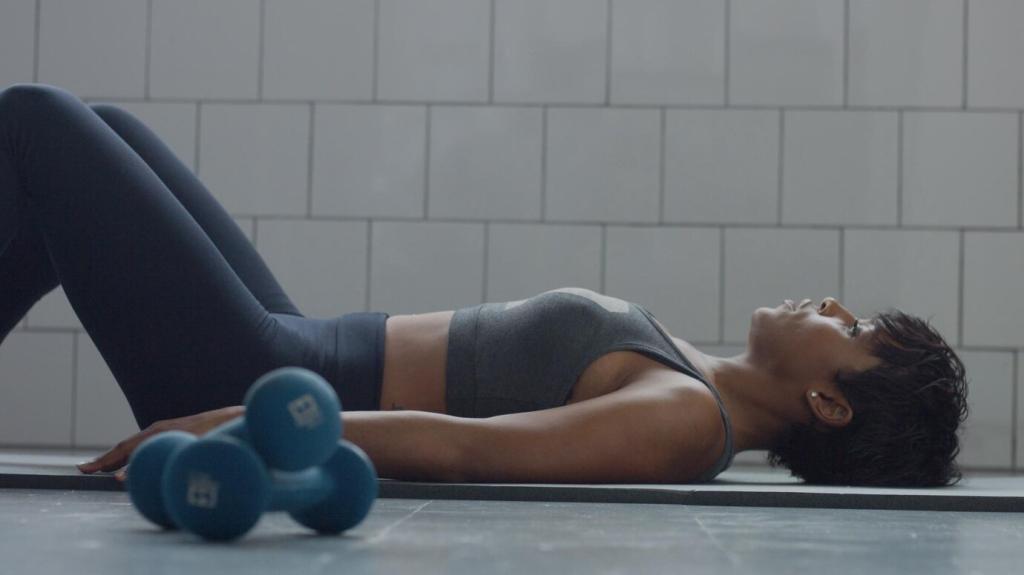
Bodyweight trinity: squat, hinge, plank
In squats, keep knees tracking over toes and chest lifted. For hinges, push hips back while your spine stays neutral. In planks, squeeze glutes and breathe steadily. Regress to wall squats or elevated planks. Record a quick side-view check for alignment.
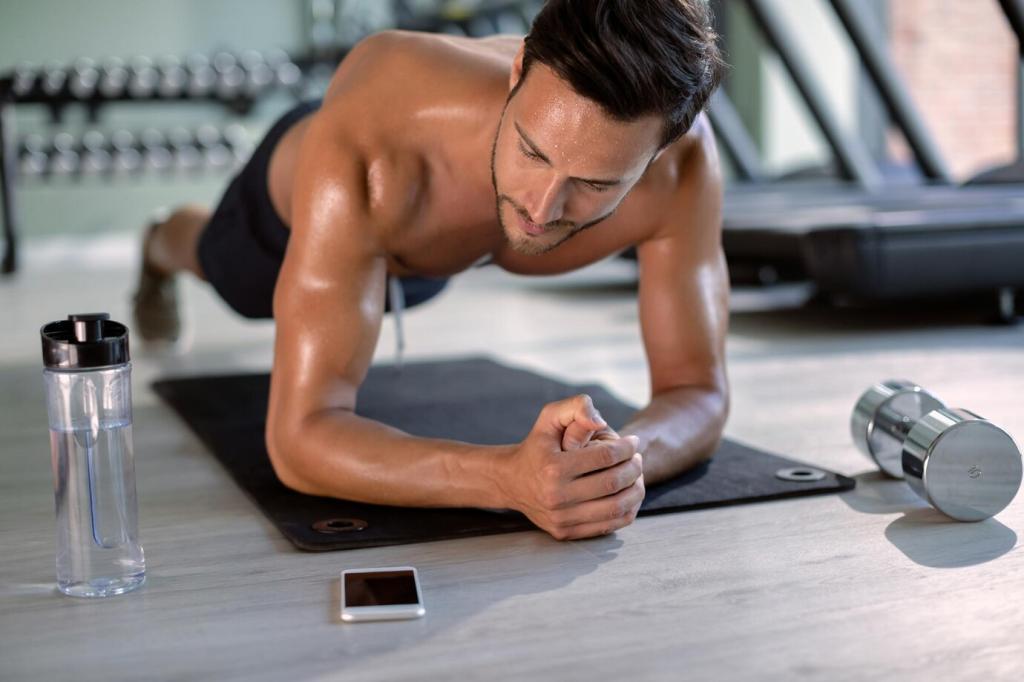
Tempo and breathing as secret sauce
Use a 3-1-2 tempo: lower for three, pause one, rise for two. Exhale on effort, inhale on return. Slowing down reveals control, builds strength, and protects joints. Let breath guide rhythm rather than ego deciding the speed.
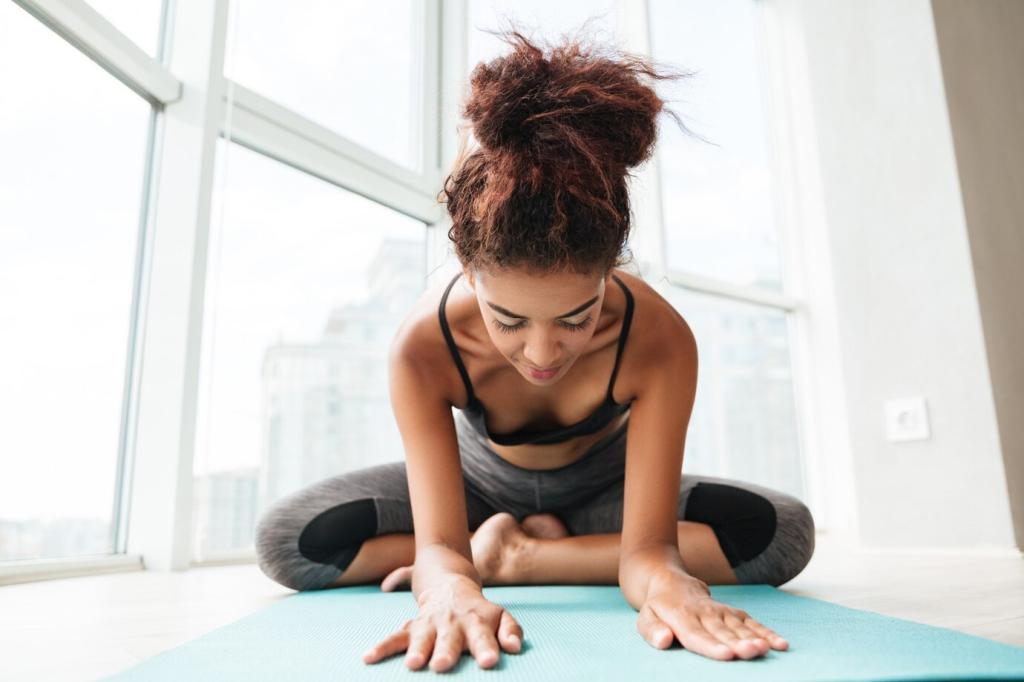
Use mirrors or phone feedback
Film ten seconds from the side and front. Look for rib flare, knee collapse, and rounded backs. Small cues—“ribs down,” “knees out,” “chin tucked”—make huge differences. Share your best form tip or aha moment with our community below.

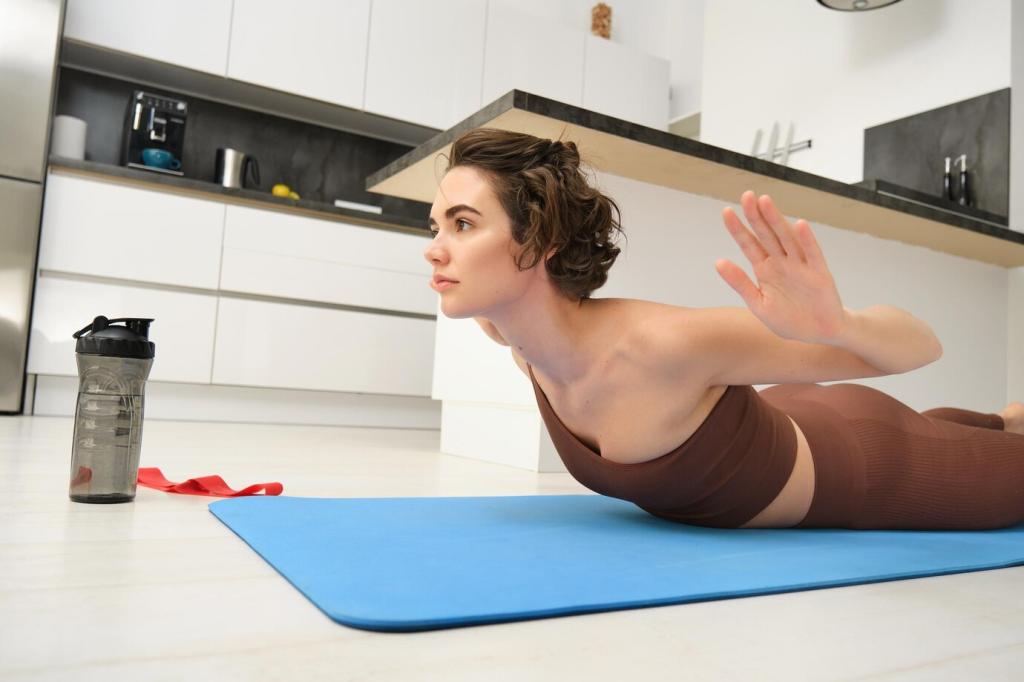
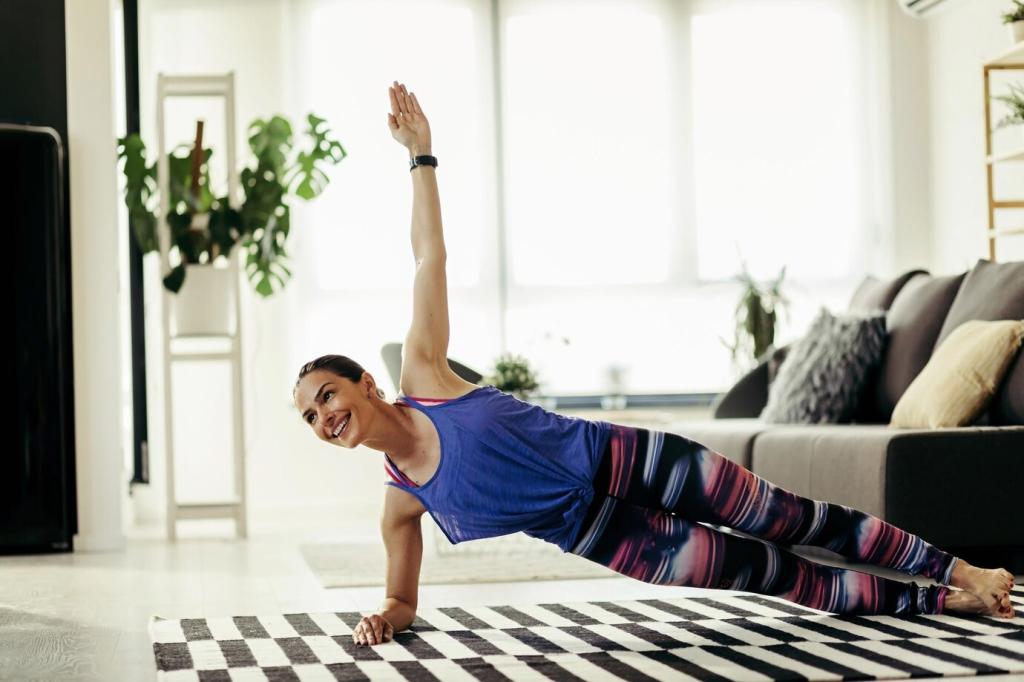
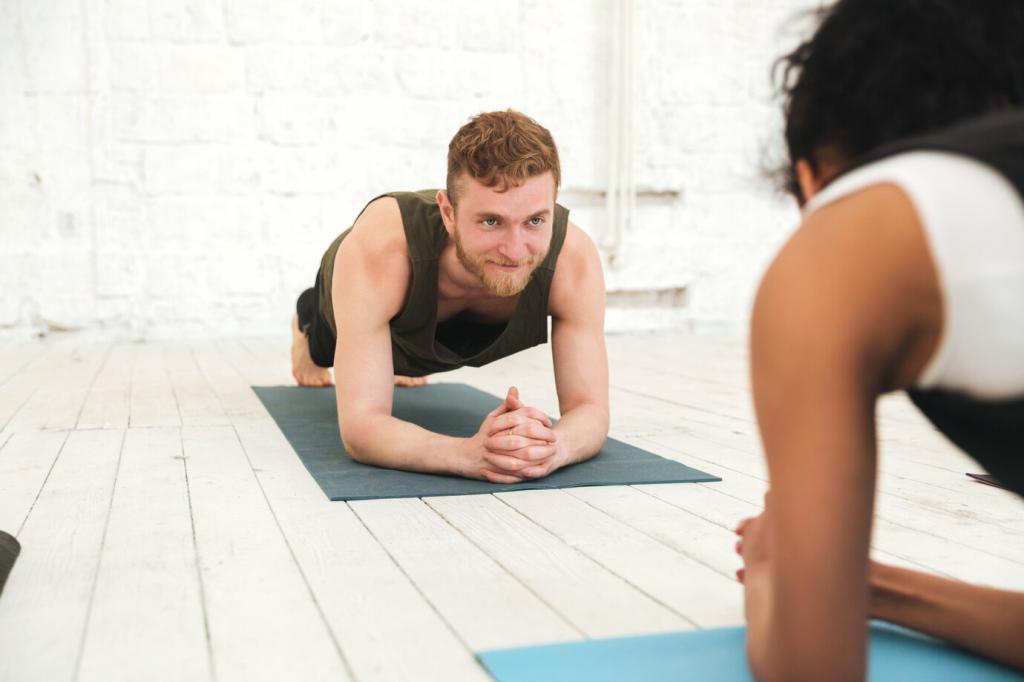
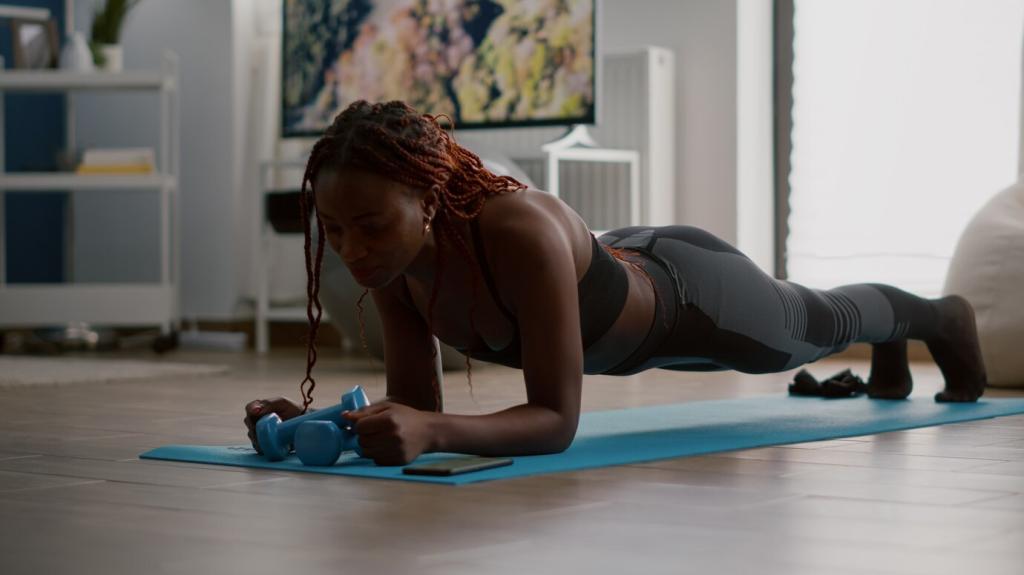
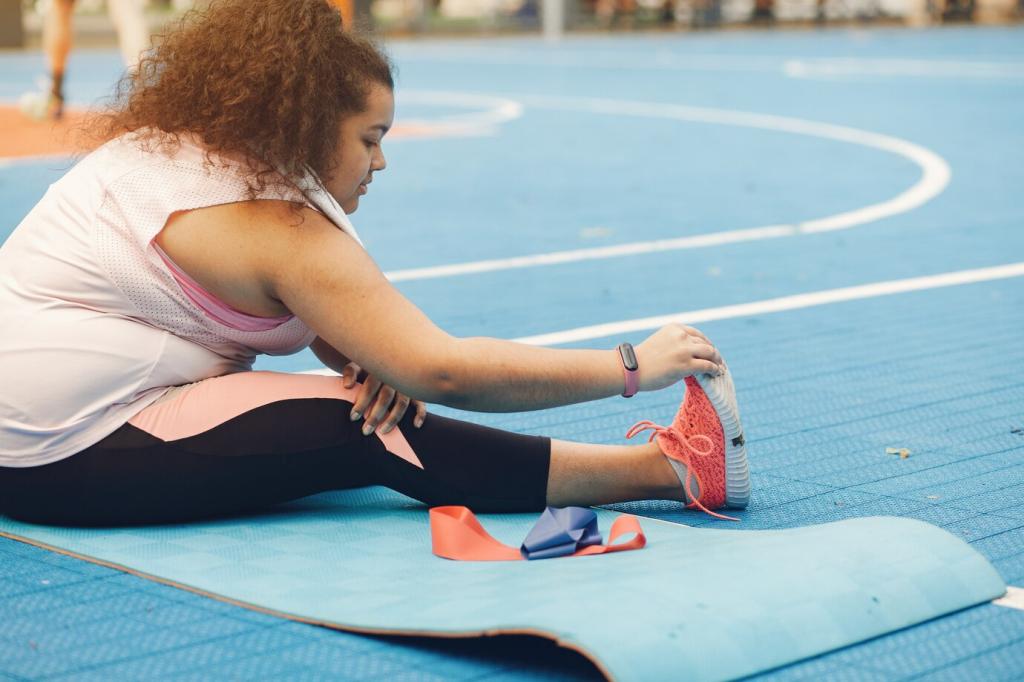
Pre-workout: light and hydrating
Keep it easy: a banana with peanut butter, yogurt with berries, or toast with honey. Drink water. Heavy, fatty meals before training can feel sluggish. Aim to eat forty-five to sixty minutes prior so energy feels steady, not sleepy.
Post-workout: protein and color
Within two hours, include twenty to thirty grams of protein plus colorful carbs and fiber. Think eggs and toast, Greek yogurt parfait, tofu stir-fry, or a bean wrap. Add a pinch of salt after sweaty sessions to replenish electrolytes naturally.
Beginner-friendly pantry
Stock oats, canned beans, tuna, frozen berries, whole-grain wraps, olive oil, and nuts. Simplicity wins on busy nights. Batch a pot of chili or a grain bowl base on Sunday. Subscribe for quick, affordable recipes tailored to short home workouts.
Motivation You Can Revisit
Tiny wins and visible streaks
Use a wall calendar and cross off days you move, even for ten minutes. Track reps or minutes, not perfection. A visible streak turns “I should” into “I do.” Drop your current streak length below to inspire someone starting today.
Accountability that fits your life
Text a friend your weekly plan every Sunday. Share a sweaty selfie in a family chat or join our comments thread. Social proof shrinks excuses and boosts follow-through. Ask someone to celebrate your tiniest win—then return the favor next week.
A newbie story: Maya’s first month
Maya started with two sets every other day, filming one angle per move. Week two, she added a band row and longer walks. After four weeks, her stairs felt easier, sleep improved, and jeans loosened slightly. What’s your month-one goal? Tell us.
Know discomfort versus pain
Expect muscle warmth, mild burn, and breathlessness. Stop for sharp, stabbing, or joint-centric pain. Modify, then retry next session. Pain that lingers, worsens, or affects daily tasks deserves attention. Your body’s signals are data—treat them with respect.
Progressions that respect your body
Elevate push-ups on a counter, then a table, then a bench. Use partial range split squats, then deepen. Change only one variable at a time: reps, sets, or resistance. Plan an easier deload week every fourth week to stay fresh.
When to ask for help
If dizziness, chest discomfort, or swelling appears, pause and consult a professional. Uncertain form? Post a respectful question and describe what you feel, not just what you see. We’re here to help—subscribe for Q&A sessions tailored to beginners at home.
Measure What Matters
Simple baseline checks at home
Try a sixty-second sit-to-stand count, a comfortable plank hold, and a step test up your stairs. Measure resting heart rate upon waking. Snap front and side photos monthly. Jot energy, mood, and sleep quality—these daily cues reveal true progress.


Progress beyond the scale
Notice how clothes fit, how easily you carry groceries, or whether stairs feel smoother. Track consistency percentage, not streak perfection. Tape measurements beat random fluctuations. The scale is just one instrument in a full orchestra of improvements.
